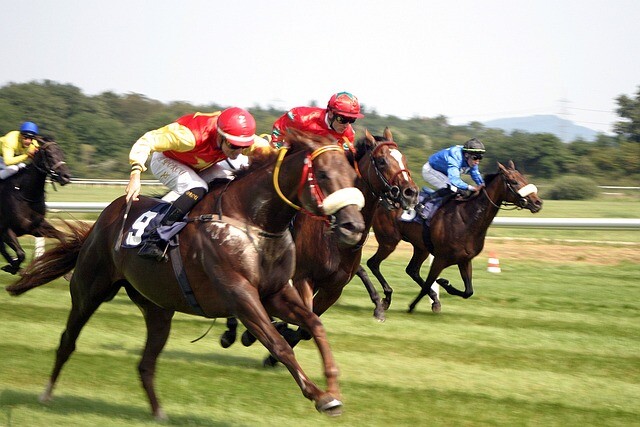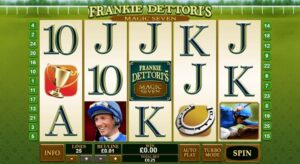 Born in Wantage, Berkshire on November 5, 1935, Lester Piggott was the greatest Flat jockey of his era and was held in awe by many of his horse racing contemporaries. He rode his first winner in Britain, The Chase, at Haydock in August, 1948, and his last, Palacegate Jack, at the same Merseyside track in October, 1994. In the intervening 46 years, Piggott rode 4,493 winners, and became Champion Jockey eleven times, including eight years running between 1964 and 1971. Many following Lester Piggott betting tips over the years, will certainly have been pleased to be a fan!
Born in Wantage, Berkshire on November 5, 1935, Lester Piggott was the greatest Flat jockey of his era and was held in awe by many of his horse racing contemporaries. He rode his first winner in Britain, The Chase, at Haydock in August, 1948, and his last, Palacegate Jack, at the same Merseyside track in October, 1994. In the intervening 46 years, Piggott rode 4,493 winners, and became Champion Jockey eleven times, including eight years running between 1964 and 1971. Many following Lester Piggott betting tips over the years, will certainly have been pleased to be a fan!
Piggott was uncommonly tall for a Flat jockey, at 5′ 8″, and his height, together with his idiosyncratic, short riding style, led to him being nicknamed the ‘Long Fellow’. He was also famously tight-lipped, mainly due to a hearing impairment and slight speech impediment, and was known, less kindly, as ‘Old Stone Face’. Piggott enjoyed fruitful associations with three of the most successful trainers in the history of British Flat racing, namely Sir Noel Murless, Vincent O’Brien and Sir Henry Cecil, and won 30 English Classics; he remains the leading jockey in the history of the Derby, with nine wins between 1954 and 1983. Many followers of his rides, would be looking to see the open times of their local bookmaker in order to lump on.
Remarkably, Piggott also remains, far and away, the most successful jockey in the history of Royal Ascot, with 116 victories, including a record 11 in the Gold Cup, in an era when the Royal Meeting was confined to four days. He also rode Nijinsky, trained by Vincent O’Brien, to victory in the 2,000 Guineas, Derby and St. Leger in 1970, thereby completing the English Triple Crown.
Piggott retired from race riding for the first time in 1985, but was subsequently found guilty of tax fraud and sentenced to three years’ imprisonment, of which he served just over a year. He came out of retirement in 1990, famously winning the Breeders’ Cup Mile at Belmont Park, New York on Royal Academy, also trained by Vincent O’Brien, less than two weeks after his return to the saddle. He also won the 2,000 Guineas in 1992, on Rodrigo De Triano, trained by Peter Chapple-Hyam, before retiring for a second, and final, time in 1995.
 Introduction
Introduction
Frankie Dettori’s Magic Seven is a 5 reel, 25 payline slot with thrilling horse racing style bonus rounds and a jackpot of 7,777 times your wager.
In the game, players can win up to 7,777x their investment if they match 5 wild Frankie Dettori symbols on the reels at the same time. Players can also win 10x their investment for matching three lower-value playing card icons.
Whenever two Magic Seven symbols appear on the reels, a scatter payout of 1x your total bet will be triggered. However, the real action comes in the free spins bonus round which triggers when three or more Magic Seven symbols appear. There is also a pick bonus round which triggers when two race course symbols appear on the first and last reels.
Bonus Feature
With some luck, Frankie Dettori’s Magic Seven’s two bonus features can prove to be highly rewarding.
In the Free Games Race bonus, players are transported to a new screen when three Magic Seven symbols appear anywhere on the screen. In this game, players must select one of three horses to participate in a virtual race, and the position of the chosen nag in the race will determine how many free spins they will then receive. A horse that finishes last receives ten spins, but a horse that finishes second gets 15 spins. You’ll be rewarded with 35 free spins if you win the race, so you could build up some big payouts.
There is also a Magic Seven bonus game that is triggered by the race track symbol rather than the Magic Seven symbol. As a result, players are taken to a racetrack divided into 20 sections, where a prize will be revealed based on their choice of a section. You can win coins in certain sections, while revealing trophies plays a video and increases your multiplier. The feature will end when you find “collect”.
 In a poll commissioned by the ‘History Channel’ in 2018, Edson Arantes do Nascimento, better known as Pelé, was voted the greatest footballer of all time, ahead of Lionel Messi and Cristiano Ronaldo. Pelé retired from professional football, at the age of 36, in October, 1977, but, in his heyday, achieved superstar status not only in his native Brazil, but around the world.
In a poll commissioned by the ‘History Channel’ in 2018, Edson Arantes do Nascimento, better known as Pelé, was voted the greatest footballer of all time, ahead of Lionel Messi and Cristiano Ronaldo. Pelé retired from professional football, at the age of 36, in October, 1977, but, in his heyday, achieved superstar status not only in his native Brazil, but around the world.
Born in the city of Três Corações, Minas Gerais, in the Southeast Region of Brazil on October 23, 1940, Pelé made his first team debut for São Paulo club Santos FC in 1956 and his first team debut for the Brazilian national team the following year. Indeed, his goal in the 2-1 defeat by Argentina at the Maracanã Stadium in Rio de Janeiro on July 7, 1957, made him the youngest ever scorer for Brazil, a record that he still holds.
In 1958, at the age of 17, Pelé became the youngest player to appear in a FIFA World Cup final, scoring twice in a 5-2 defeat of hosts Sweden. He would win the FIFA World Cup again in 1962 and, after suffering a torrid time in 1966, when Brazil failed to progress from the group stages, again in 1970, to become the only three-time winner in history. All told, ‘Pérola Negra’, or ‘Black Pearl’, as Pelé was sometime known, scored 77 goals in 92 official appearances for Brazil, including 12 in 14 games at the World Cup, and remains the all-time leading goalscorer for his country.
At club level, Pelé played for Santos FC for nineteen seasons, winning the Campeonato Paulista nine times and the Copa Libertadores de América and the Intercontinental Cup twice apiece. He retired from Brazilian club football in 1974, but joined New York Cosmos of the North American Soccer League, to no little fanfare, the following season.
 George Best, who died in November, 2005, was one of the most naturally gifted players in the history of football. Genuinely two-footed, quick and elusive, he was equally effective on the left or right flank and garnered worldwide acclaim for his technical ability and flair. Indeed, in his heyday in the mid to late Sixties, his celebrity transcended football, so much so that he was dubbed the ‘Fifth Beatle’.
George Best, who died in November, 2005, was one of the most naturally gifted players in the history of football. Genuinely two-footed, quick and elusive, he was equally effective on the left or right flank and garnered worldwide acclaim for his technical ability and flair. Indeed, in his heyday in the mid to late Sixties, his celebrity transcended football, so much so that he was dubbed the ‘Fifth Beatle’.
Handsome, stylish and extremely well-paid, by ordinary standards, Best enjoyed a playboy lifestyle, of which he once said, ‘ I spent a lot of money on booze, birds and fast cars. The rest I just squandered.’ Sadly, though, Best suffered from lifelong alcoholism, which overshadowed his brilliant playing career, led to a controversial liver transplant in 2002 and, ultimately, resulted in his premature death, at the age of 59.
Born in Belfast on May 22, 1946, Best was scouted by Manchester United as a 15-year-old and made his first team debut against West Bromwich Albion at Old Trafford on September 14, 1963. Two First Division titles, in 1965 and 1967, and a European Cup, in 1968, followed, but Best did not stay long at the top of the game.
In 1972, beset with problems with alcohol, which led to erratic form and behaviour, not to mention weight gain, Best announced his retirement, more than once, before changing his mind. Nevertheless, he failed to recover his previous level of brilliance and made his final appearance for Manchester United in 3-0 defeat by Queens Park Rangers on January 1, 1974. Still only 27, played for 11 different clubs, including Stockport, Fulham, Hibernian and Bournemouth, without any notabel succcess, before finally retiring in 1983.
